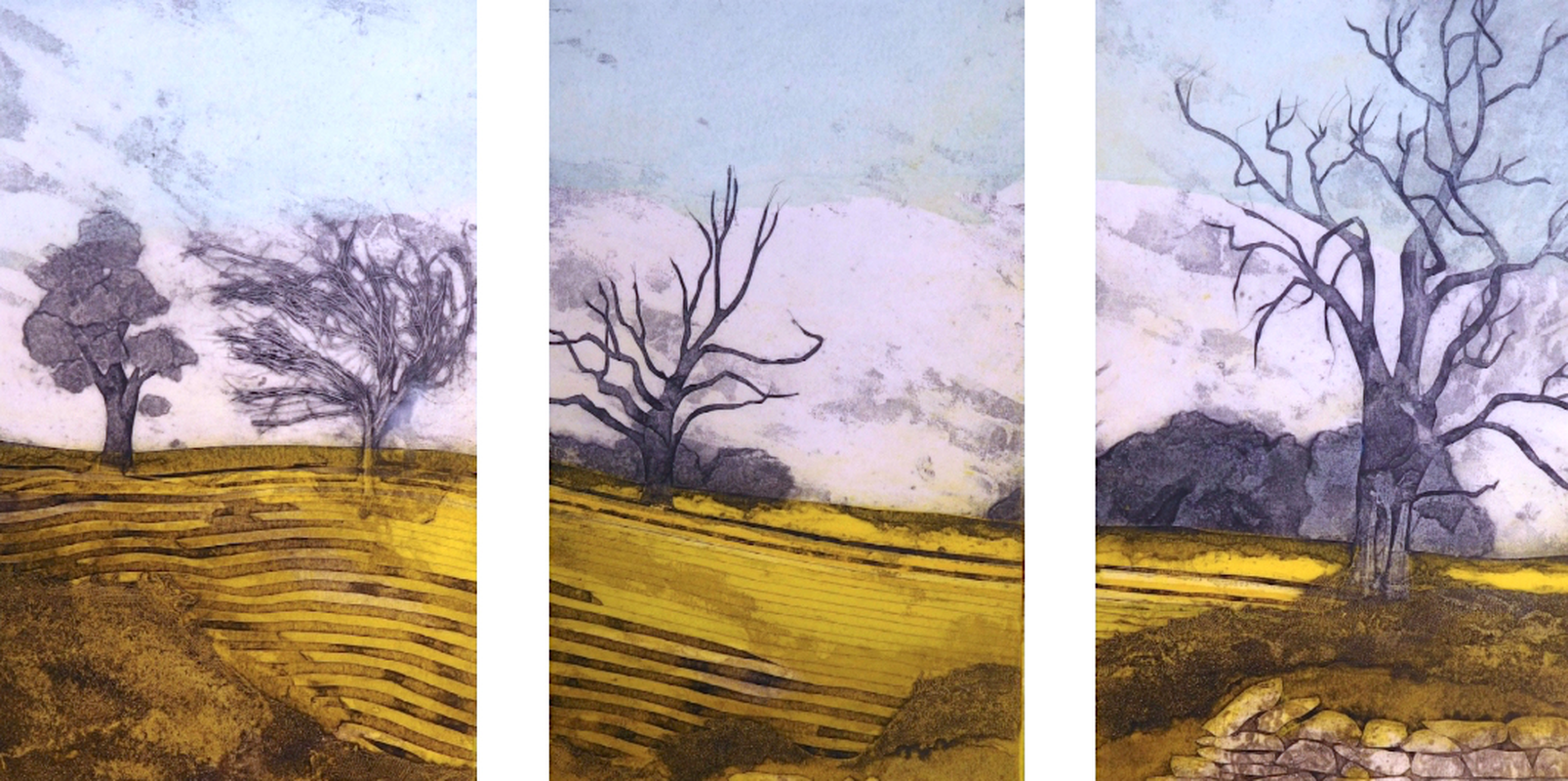
SARAH ROSS-THOMPSON AND THE ART OF COLLAGRAPHED PRINTS
I interviewed artist Sarah Ross-Thompson whose exceptional Collagraphed prints use fabrics, lichen, porridge and string to create images of the dramatic Scottish Highlands where she
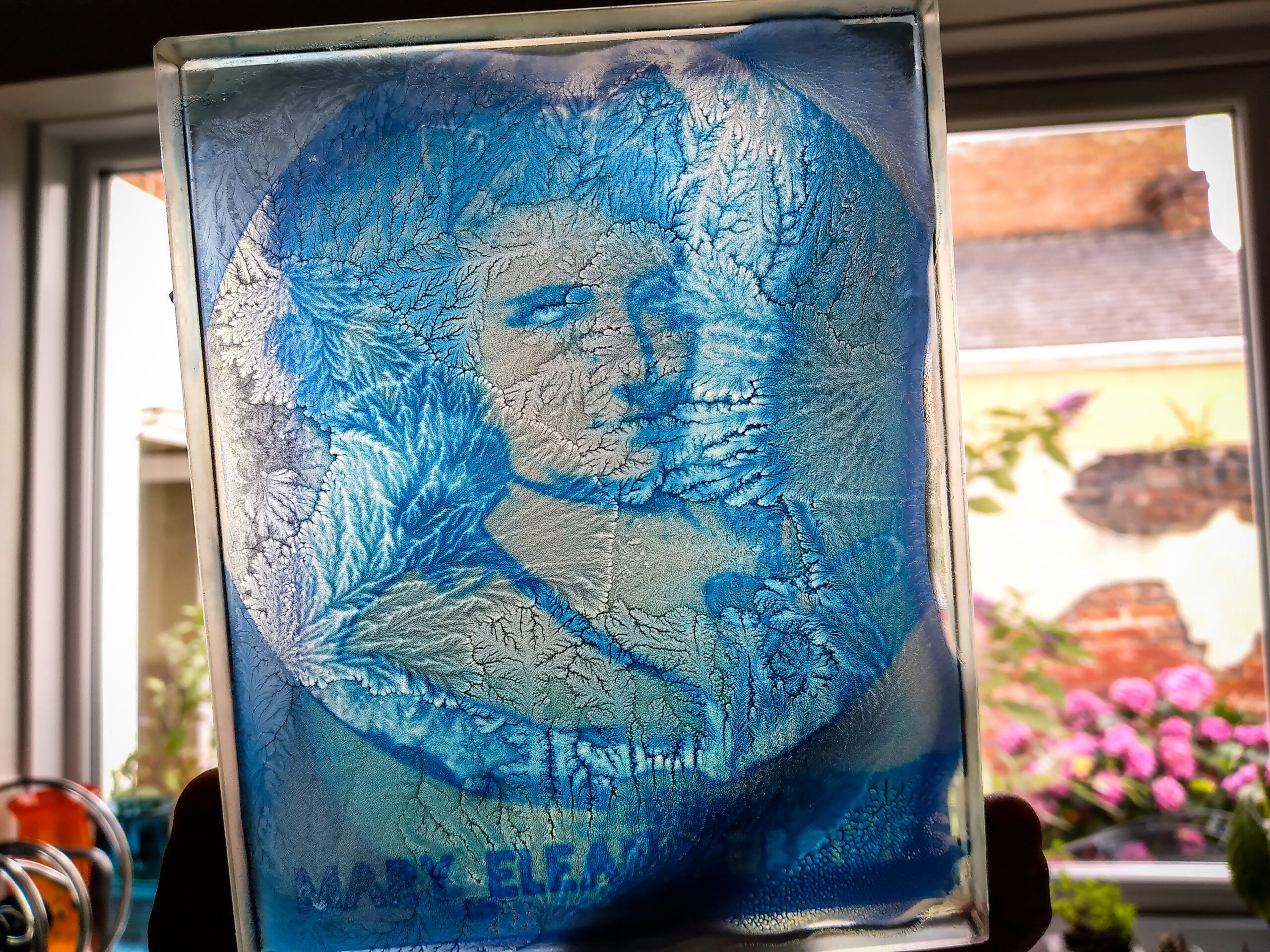
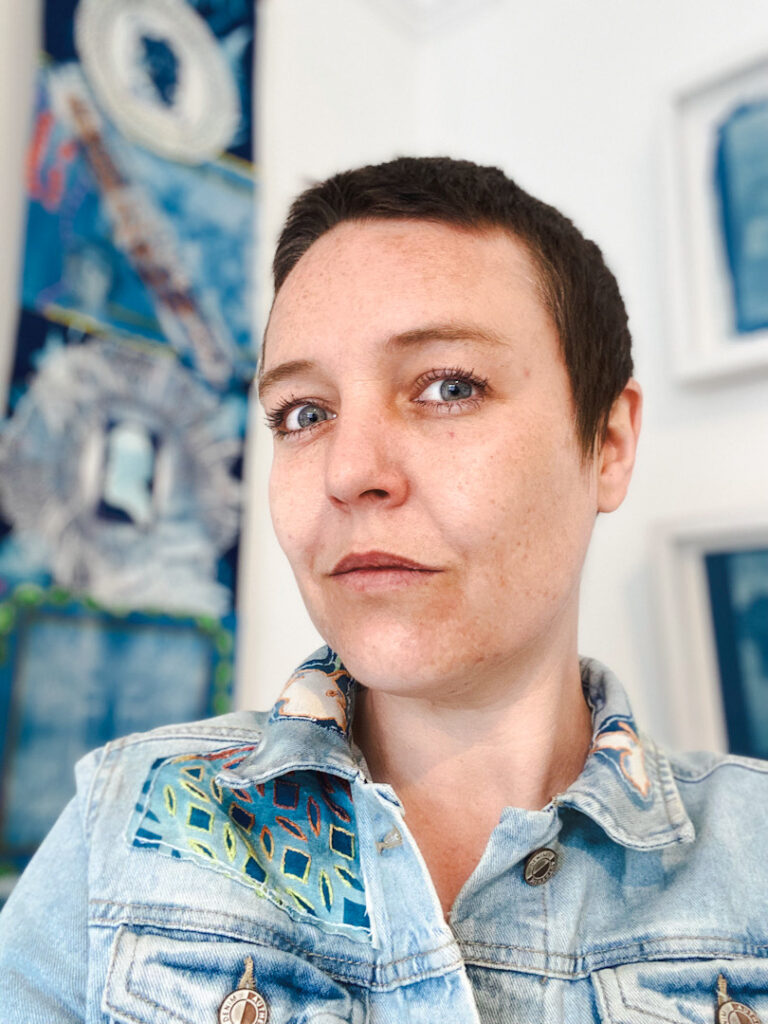
I interviewed Jo Howell who says about herself: “I’ve been a professional photographic artist since I left Uni in 2009. I am a cyanotype specialist. I use photography and art to work with other humans in beautiful chaos.”
Jo talks about her creative history and methods as well as her campaigning work to Save the National Glass Centre .
Leslie: You describe yourself as a “flamboyant working class disabled artist based in Sunderland”. What have been the barriers and opportunities you’ve experienced that concern class, disability and location?
Jo: Wow that’s a big question to open with! Lots to unpack there. I might just take it word by word.
Flamboyant because I love being audacious. Being a little bit weird makes life more interesting.
Working class born at the arse end of the miner’s strike. Dad briefly worked at Monkwearmouth Colliery now the Stadium of Light. There was a lot of poverty where I grew up. My Sega games were stolen by a crack head when I loaned them to my mate. I come from a very long line of Mackem’s ship builders, pie makers, cathode TV repair and cleaners. Art was definitely not a proper job.
Disabled was something that began happening around 12 years ago. I started feeling loads of pain in my body. It would move. I’d crash out. I would be exhausted for no reason. My brain stopped working on occasion. It was quite scary and it got pretty extreme. I was down because I didn’t understand what was going on. I was being gaslighted by professionals and I was struggling to have any quality of life. I realised I had fibromyalgia. My doctor says it isn’t real but luckily medicates me anyway. I now manage most of the time but a flare and exhaustion and pain are just part of everyday life now. You learn to manage as best you can.
In Sunderland… most people who deem themselves Mackem and were born here have sea salt in their blood. The location is a great inspiration. I love Sunderland and would never leave if I had my way. There are a lot of cultural changes happening here at the moment so that isn’t as guaranteed as it used to be.
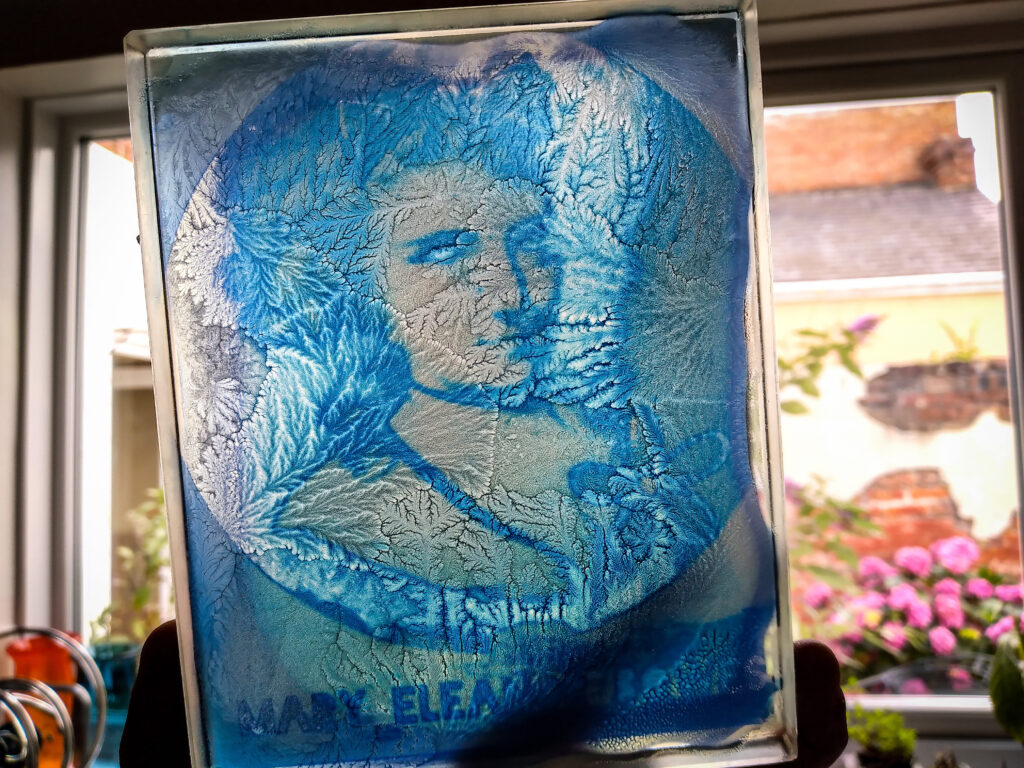
Opportunities are hard won in the North. I have worked professionally since 2010 making my living from freelance work, commissions, projects, teaching, commercial photography and pretty much anything that we can call moderately creative. This makes me resilient. Vulnerable and resilient.
Leslie: Where and when did your artistic drive begin and how has it been nurtured and developed?
Jo: I’ve always loved making things, drawing, telling stories, acting, making games and I seem to have a knack of getting lots of people to join in. That began as a kid. Peg dolls and imagination.
Leslie : Tell us about your flamboyance and where it comes from.
Jo: It’s probably mainly to my sense of humour. I use wit to slay the dragons whenever possible. I look quite normal but once my gob is open you’ll probably never forget me. I don’t know if that’s necessarily a plus point, but as I approach the age of 40 (couple of years!) I think it is safe to assume that I’m not going to be toning it down anytime soon. One source of flamboyance is from my mam. She still occasionally gets her hair done in many colours and is growing old disgracefully but wonderfully.
Leslie: You specialise in the cyanotype process. Can you give us a beginner’s guide to what it is and some examples of how you use it.
Jo: Cyanotype is also known as the blueprint. It is a photographic process that you may have heard of being used in architecture for the design blueprints. The cyanotype chemistry was used because it was much cheaper than black and white photography which is silver nitrate or other precious metals. Cyanotype is mainly iron oxide which is abundant and therefore cheap! Invented by Sir John Herschel in 1854 and then made famous by his next-door neighbour Anna Atkins, then Children, who used the process to create the very first photographically illustrated botanical science book.
I call it the gateway into photography. The process isn’t as sensitive as other forms of photography so it is quite easy to do at home without the need for a darkroom. I tend to prepare paper the night before I want to use it. You then need UV light to expose the chemistry and then super cold water to wash away the chemistry that hasn’t been exposed to the UV. It is simple and insanely versatile. You can use it on paper, fabric, ceramic, stone and if you add gelatine then you can also use the chemistry on non-porous materials scubas glass or metal. It’s a wonderful crossover material that can help liberate the making process.
Leslie: Can you tell us some stories, please, of how you’ve used photography (and other techniques) to encourage participation in your projects.
Jo: In 2018 I gained a commission that I called #WearExperimenting. The commission was to create a public engagement project that explored science and photography with the general public in the City of Sunderland. I went all over the City and put up a darkroom tent so that people could take a photograph with a handmade camera and then develop it in the traditional way. This worked really well and luckily I had a wonderful team of student assistants who helped me to put up the tents and deliver the project! We went to shopping centres, churches, fields, collages, libraries, parks, festivals – you name it and I was there with my tent. It worked extremely well because it was so weird. This large black cube inside a bigger marquee would just appear and then I’d appear in my lab coat. It was performative, silly, fun, and lots of people learned how science and photography went hand in hand by learning some basics about the physics of light.
Leslie: Tell us about the most important campaigns you’ve been involved in – why them?
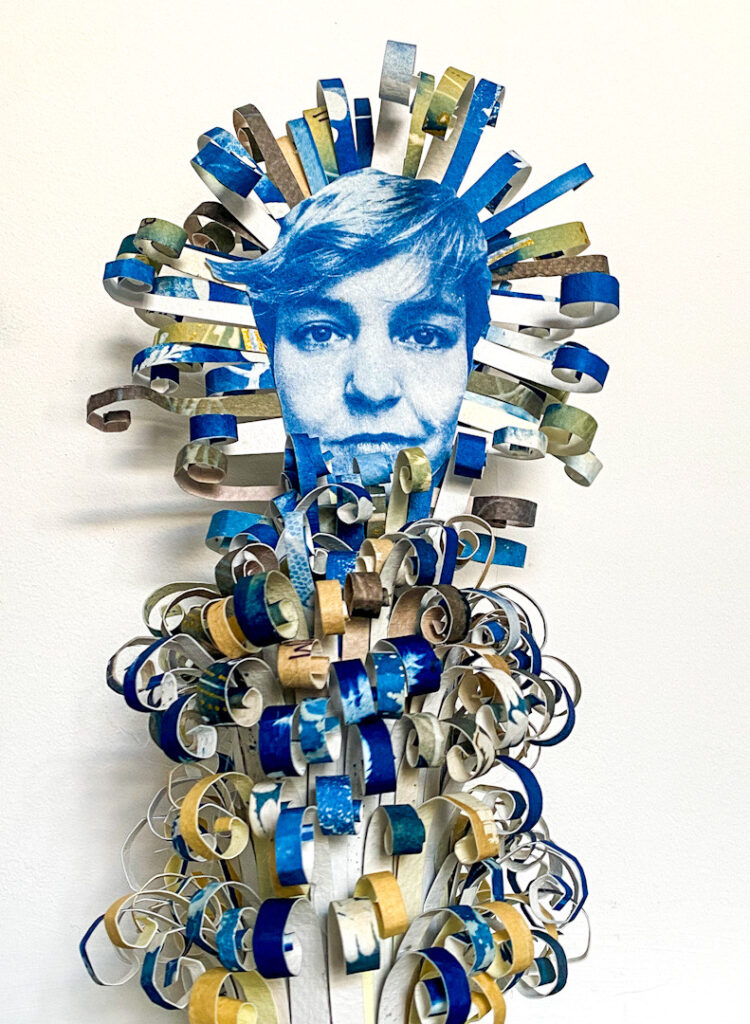
Jo: I’ve been involved in several campaigns but only taken a lead role in two. Those two are the setting up of the Save the National Glass Centre campaign and during covid lockdowns I set up a benevolent fund with the Artists Union England to help artists through the distribution of micro bursaries. Both of the campaigns that I have taken more of a lead role in are ones that have struck a chord with me. I was lucky enough during the lockdowns to have been working as a successful artist for more than 10 years so I could tap into the government grants that were available. It was horrifying to realise how many creative people didn’t meet the threshold and so they were left with nothing to live off.
We had initially set the fund up with the intention of only going for a year. However the lockdowns just kept coming so it ended up being closer to two years that we ran the fund, distributing around £5,000 to artists in need. We fundraised for it ourselves with a combination of crowd funding, donating workshops or artworks for sale. It was the right thing to do at the time.
The Save the National Glass Centre Campaign started in 2023 when Sunderland University announced that they intended to close the National Glass Centre by 2025. That date has been pushed back a little to 2026 but essentially the building has been earmarked for destruction and I have spent the last year and a half putting together a team of people to help save the building and all it contains. The National Glass Centre was opened in 1998 by King Charles and has been the focal point for arts funding since then. The building has successfully changed the old contaminated ship yard that it sits on top of into a monument to glassmaking on the historic riverside site. The building is cathedral-like. With a large and super light interior. It was the first millennium project to gain public funding. Building upon the firm heritage of 1350 years of glassmaking on the river Wear.
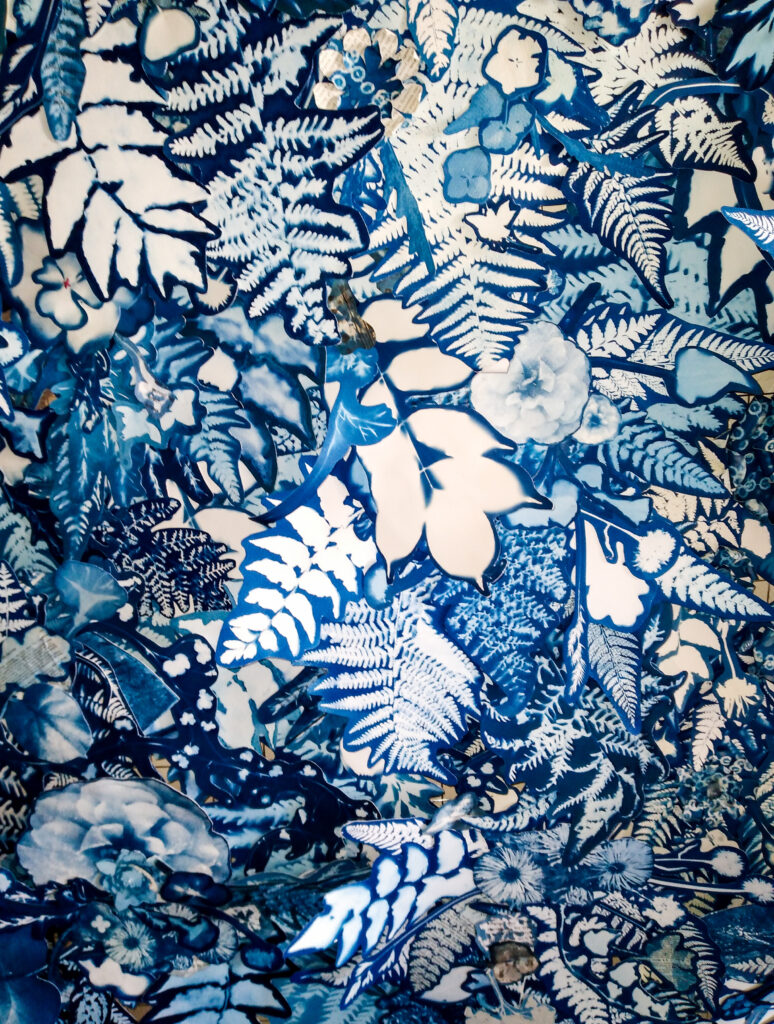
The ultimate destruction of the building is a travesty that once committed will not be undone. The wider cultural economy has already suffered massively as a consequence of the university announcement. There are noticeably less opportunities around for the satellite businesses like my own that exist because of the National Glass Centre. Without the specialist venue there is nowhere to centrally focus upon. The idea of distributing the offering across the City is woefully inadequate, and will destroy the creative businesses that have come to rely upon Sunderland’s only national organisation.
It’s still very much ongoing. There is a petition that everyone can sign and share.
We already submitted to the council at 21,000 signatures but I want to see if we can get it to 100,000 as then I can submit to parliament. We have already met with lots of MPs, Councillors, union reps, locals, lecturers, the arts council, and even entertained a Lord! Everyone (with the exception of some labour MPs) have fully supported the plan to bring the National Glass Centre back into public hands.
We need to stop demolishing buildings. It’s not sustainable.

It’s a colossal task but I’ve got nothing to lose. It will all be gone with the building and the creatives inside. The insidious thing about all of this is the patronising and callous treatment of everyone involved. They are being gaslit into blindly accepting empty promises when their whole livelihood and career is at stake. If it was a steelworks or a commercial enterprise directly employing lots of people then there would be an outcry. But due to the nature of the creative industries being mainly staffed by freelancers the true economic impact will be hidden.
Leslie: What characterises your own artwork, how do you get the time and necessary focus to create it, and where can we view/buy your work, please?
Jo: My own artwork is usually a combination of photography, mixed media and textiles. You can usually tell my work in the room because it will be predominantly blue. The main chemistry that I work with is called cyanotype. It is a blue coloured photographic chemistry that is fairly non-toxic and easy to use. The toxicity is important now due to my chronic pain condition that can be set off by smells, chemicals, light, heat or physical exertion. The cyanotype chemistry seems to be fairly benign and doesn’t set off a flare. The heady smell of darkroom chemicals does have an effect. Making me nauseous and tired.
You can see my work online and you can buy it from Etsy or Saatchiart.
I have work on display at Washington Old Hall at the moment as part of the celebration of the township becoming 60 years old. My work is about Gertrude Bell and her army of assistants who carried her bath across the desert. It’s a fun look at a local heroine that combines two framed cyanotypes and a fabric wall hanging. The exhibition is on until June so there is still a little time to see it.
Next week, I interview poet Polly Oliver about the music of the spoken word and learning Welsh
ABOUT LESLIE TATE’S BOOKS:

I interviewed artist Sarah Ross-Thompson whose exceptional Collagraphed prints use fabrics, lichen, porridge and string to create images of the dramatic Scottish Highlands where she
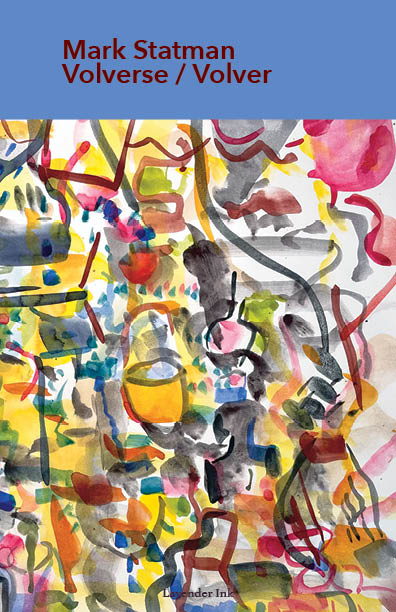
Part 2 of my interview with Mark Statman looks closely at Mark’s Latin American poetic influences, his life in Mexico and ends with an extract
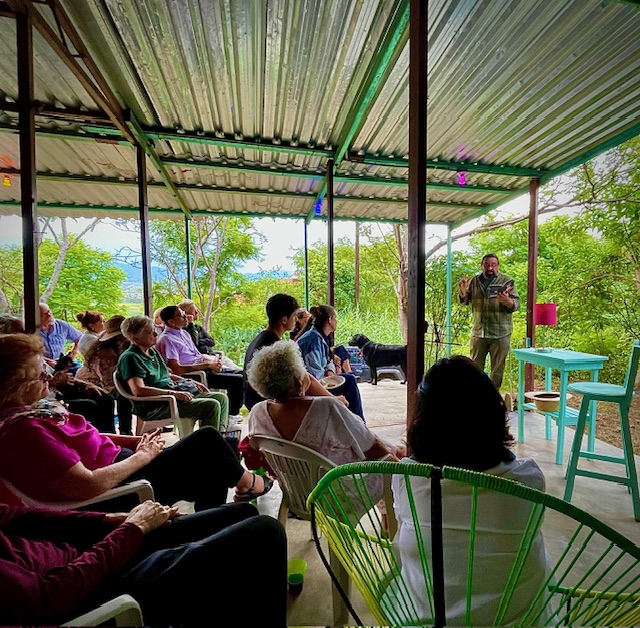
I interviewed international poet and translator Mark Statman about Volverse/Volver, his 14th published collection. Mark, who has won national arts awards, is Emeritus Professor of Literary

I interviewed Lisa Dart, finalist in the Grolier, Aesthetica and Troubadour Poetry Prizes and author of The Linguistics of Light (poems, Salt, 2008), Fathom (prose
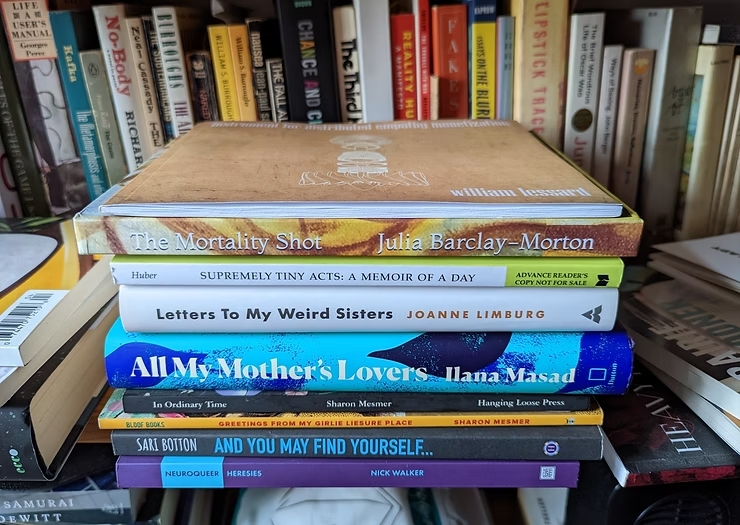
I interviewed writer Julia Lee Barclay-Morton about her experience of autism. Julia began as an experimental dramatist in New York, moving to the UK to
| Cookie | Duration | Description |
|---|---|---|
| cookielawinfo-checkbox-analytics | 11 months | This cookie is set by GDPR Cookie Consent plugin. The cookie is used to store the user consent for the cookies in the category "Analytics". |
| cookielawinfo-checkbox-functional | 11 months | The cookie is set by GDPR cookie consent to record the user consent for the cookies in the category "Functional". |
| cookielawinfo-checkbox-necessary | 11 months | This cookie is set by GDPR Cookie Consent plugin. The cookies is used to store the user consent for the cookies in the category "Necessary". |
| cookielawinfo-checkbox-others | 11 months | This cookie is set by GDPR Cookie Consent plugin. The cookie is used to store the user consent for the cookies in the category "Other. |
| cookielawinfo-checkbox-performance | 11 months | This cookie is set by GDPR Cookie Consent plugin. The cookie is used to store the user consent for the cookies in the category "Performance". |
| viewed_cookie_policy | 11 months | The cookie is set by the GDPR Cookie Consent plugin and is used to store whether or not user has consented to the use of cookies. It does not store any personal data. |
2 responses
These are such stories we want to hear from different people from the communities. I wish we could have clubs of people who may be involved in this and who may be helping to inspire others
🙂 🙂 🙂